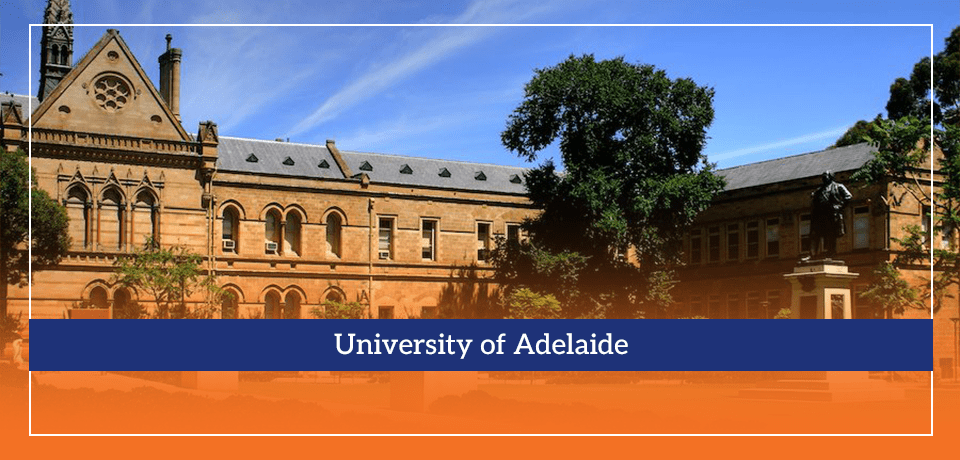
Australia is one of the top choices for studying medicine. The country is known for its top medical schools in the world. Students here get a great education and hands-on training. It’s also famous for its medical research. Many of the world’s best medical studies come from Australian universities.
Choosing the right medical school is important for your future. So, in this article, we’ll talk about the top medical schools in Australia. We’ll look at medical programs in Australian universities, admission requirements, career opportunities, and more.
Let’s dive in!
When ranking the top medical schools in Australia, we considered some key factors. These determine the quality and success of each program. Here’s a breakdown of how we evaluated them:
We placed significant importance on accreditation by the Australian Medical Council (AMC) because accreditation is a fundamental requirement for Australian medical universities.
We also focused on academic excellence. We prioritised universities with strong faculty members and a good history in the medical field. Medical schools with high academic standards stood out in our ranking.
Research output plays a vital role in medical education. We ranked the medical schools that contribute greatly to medical science through research higher.
We gave special attention to clinical training facilities. Practical experience is crucial in medical education. Universities with excellent partnerships with hospitals, clinics, and healthcare institutions received higher ranks.
Another important factor was student satisfaction. Medical schools that provide a supportive and positive learning environment tend to produce better outcomes.
Finally, we considered graduate outcomes. Medical schools that help their graduates secure jobs, pass exams, and continue to excel in their careers were rated higher.

The University of Melbourne is the best medical school in Australia. Founded in 1853, it is Australia’s second-oldest university. Located in Parkville, Melbourne, it has a rich history of academic excellence. In 1862, it established the first medical school in the southern dominions, starting with just three students.
Today, the Melbourne Medical School is renowned for its contributions to medical education and research. The university hosts numerous research centres, fostering innovation in various medical fields. In the 2025 THE’s rankings for Clinical and Health subjects, the University of Melbourne is ranked 20th globally.
Another of the best universities in Australia for medicine, the University of Sydney, established in 1856, is Australia’s first medical school. Located in Sydney, New South Wales, it has a long history of excellence in medical education. The Sydney Medical School started with just six students and has grown significantly over the years. Today, it is recognised for its innovative curriculum and extensive network of clinical schools.
The university is home to numerous research centres. Its Doctor of Medicine (MD) program is a four-year, full-time graduate entry course. Each year, the program accepts 300 students, including up to 70 full-fee places for international students. It is one of the best medical schools in Australia for international students, and a great choice if you’re planning to study medicine in Australia.
Another top medical school in Australia is Monash School of Medicine. Established in 1958, Monash University is one of Australia’s leading universities. It offers a comprehensive medical program with two entry points. One is a direct-entry program for school leavers. The other is a graduate-entry program for those who have completed a degree.
The medical program is internationally recognised and focuses on patient safety and professional practice. Students benefit from access to the largest healthcare provider network in Australia, including major hospitals like Monash Medical Centre and Alfred Health. The university is also home to numerous research centres, contributing to advancements in various medical fields.
Direct Entry (for school leavers):
Graduate Entry:

UNSW was founded in 1949. It’s another leading Australian university located in Sydney, New South Wales. UNSW Medicine, established in 1960, has a strong reputation for excellence in medical education and research. The Bachelor of Medical Studies/Doctor of Medicine (BMed/MD) program is a six-year, full-time undergraduate degree. It combines medical studies with clinical practice.
Students gain hands-on experience through partnerships with major hospitals and research institutes. UNSW is home to several prominent research centres. It’s one of the top universities for medicine in Australia. THE ranks UNSW among the top 100 universities globally for clinical and health subjects.
As one of Australia’s leading research universities, the University of Queensland (UQ) is located in Brisbane, Queensland. It’s one of the top-ranked Australian medical schools. Its Doctor of Medicine (MD) program is a four-year, full-time graduate-entry course. Students gain early exposure to the real-world medical field through UQ’s partnerships with hospitals and research centres.
The university is known for its major contributions to medical research. They have made significant contributions to vaccines, public health, and cancer research. UQ researchers played a key role in developing a COVID-19 vaccine candidate.
The Australian National University (ANU) is another prestigious institution situated in Canberra, the capital of Australia. In 2003, the Australian National University (ANU) established its Medical School, marking a significant milestone in its history. Its Doctor of Medicine and Surgery (MChD) program is a four-year, full-time graduate-entry course.
This program integrates medical sciences, clinical skills, and professional development. The university is renowned for its research contributions, particularly through the John Curtin School of Medical Research.

The University of Adelaide is among Australia’s oldest universities. Located in Adelaide, South Australia, it has a long history of excellence in medical education. The university’s medical program spans six years.
This program emphasises a strong foundation in medical sciences, clinical skills, and professional development. Students here benefit from early clinical experience through partnerships with major hospitals and research centres. The university is renowned for its research contributions, particularly in areas like public health and medical innovation.
Academic Qualifications:
English Proficiency:
Another leading institution in Australia is the University of Western Australia (UWA). UWA’s Medical School, founded in 1957, is the oldest in Western Australia. Their Doctor of Medicine (MD) program is a four-year, full-time graduate-entry course. It integrates medical sciences, clinical skills, and professional development.
UWA is renowned for its research contributions, particularly in areas like public health and medical innovation. THE ranks UWA 72nd globally for medical and health subjects.
The University of Newcastle (UON), founded in 1965, is a leading institution in medical education. Its Joint Medical Program (JMP) is one of the most competitive medical programs in Australia. It’s offered in partnership with the University of New England. The program integrates clinical training from the first year.
UON is also famous for its strong focus on rural and regional healthcare. The university has several research centres dedicated to medical innovation, such as the Hunter Medical Research Institute.
Deakin University’s School of Medicine, located in Geelong, is one of Australia’s leading medical schools. The Doctor of Medicine (MD) program at Deakin is a four-year graduate-entry course. It’s designed to train future doctors with a strong focus on rural and regional healthcare. The university partners with numerous hospitals, clinics, and research centres to provide extensive clinical training.
The program also offers 35 bonded medical places under the Australian Government’s Bonded Medical Program. Deakin University has a reputation for excellence in medical research, particularly in areas like chronic diseases, mental health, and public health.
|
University |
Location |
Program |
Program Duration |
Average Tuition Fees (AUD/annually) |
|
University of Melbourne |
Melbourne, Victoria |
Doctor of Medicine (MD) |
4 years |
$70,000 - $80,000 |
|
University of Sydney |
Sydney, New South Wales |
Doctor of Medicine (MD) |
4 years |
$80,000 - $85,000 |
|
Monash University |
Melbourne, Victoria |
Doctor of Medicine (MD) |
4 years |
$80,000 - $90,000 |
|
University of New South Wales (UNSW) |
Sydney, New South Wales |
Bachelor of Medical Studies/Doctor of Medicine (BMed/MD) |
6 years |
$70,000 - $75,000 |
|
University of Queensland (UQ) |
Brisbane, Queensland |
Doctor of Medicine (MD) |
4 years |
$60,000 - $70,000 |
|
Australian National University (ANU) |
Canberra, Australian Capital Territory |
Doctor of Medicine and Surgery (MChD) |
4 years |
$70,000 - $75,000 |
|
University of Adelaide |
Adelaide, South Australia |
Bachelor of Medical Studies / Doctor of Medicine |
6 years |
$65,000 - $75,000 |
|
University of Western Australia (UWA) |
Perth, Western Australia |
Doctor of Medicine (MD) |
4 years |
$65,000 - $75,000 |
|
University of Newcastle |
Newcastle, New South Wales |
Bachelor of Medical Science and Doctor of Medicine (MD-JMP) |
4 years |
$60,000 - $70,000 |
|
Deakin University |
Geelong, Victoria |
Doctor of Medicine (MD) |
4 years |
$60,000 - $70,000 |

The application process for medical schools in Australia includes multiple steps. All of them require specific admission tests and prerequisites that we’ve mentioned earlier. In this section, we’ve broken down the common admission tests and provided guidance on how to prepare for them.
The UCAT is one of the most common admission tests for medical school applicants in Australia. Many universities require it as part of their entry requirements. The test takes around 2 hours to complete.
Some universities use the GAMSAT for graduate-entry medical programs. It tests a candidate’s ability to apply scientific knowledge to problem-solving and evaluates general reasoning abilities in the humanities and social sciences. The GAMSAT is divided into three sections and is a lengthy test, taking about five hours to complete.
Medical schools often require interviews as part of their selection process. Interviews assess an applicant’s communication skills, personal qualities, and motivation to pursue a career in medicine.
Before applying to medical schools, applicants must complete certain prerequisite courses. These courses ensure that students have a solid foundation in subjects critical to medical studies. Undergraduate medical programs often require biology, Chemistry, Physics, and English. A strong GPA is also essential.
Now, let’s explore some scholarships and financial aid opportunities available to medical students in Australia, as these scholarships can significantly alleviate the financial burden of medical education.
Australia has a strong and growing demand for healthcare professionals, especially in the medical field. The country is experiencing an increasing need for doctors due to an ageing population, rising healthcare needs, and advances in medical technologies. Rural and remote areas face particular shortages, making these regions key areas for job opportunities.
The Australian government has also recognised this demand, investing in initiatives such as the John Flynn Placement Program and the Rural Health Outreach Fund to ensure that healthcare professionals are available in underserved areas.
After completing their medical degree, graduates in Australia have a wide range of career options available to them. These include, but are not limited to:
To become fully qualified, medical graduates in Australia must complete an internship. Then, they need to complete a residency program.
Internships are typically one-year programs following the completion of medical degrees in Australia. Interns rotate through various specialities, including surgery, medicine, paediatrics, and emergency medicine. They work under supervision in hospitals or clinics, gaining practical experience and refining their clinical skills. Interns must be registered with the Medical Board of Australia to practice.
After completing the internship, doctors can apply for a residency program in their chosen speciality. Residency involves advanced training in a particular field of medicine. It can last 3-7 years, depending on the speciality.
While salaries vary depending on the career path and experience level, here is a rough overview of the average salaries for medical professionals in Australia:
|
Medical Profession |
Average Salary (AUD) |
|
General Practitioner (GP) |
$200,000 - $300,000 per year |
|
Specialist |
$300,000 - $500,000 per year (varies by speciality) |
|
Medical Researcher |
$70,000 - $120,000 per year |
|
Public Health Officer |
$80,000 - $150,000 per year |
|
Hospital Resident |
$75,000 - $90,000 per year |

Australia has many top medical schools. Some of the best include the University of Melbourne, the University of Sydney, Monash University, and the University of Queensland.
Admission requirements vary by school. Generally, you need a bachelor’s degree. Most schools also require a competitive grade point average (GPA). You may need to take an entrance exam, such as GAMSAT, MCAT, or UCAT. Some schools also require an interview.
Studying medicine in Australia can be a costly endeavour. Tuition fees range from AUD 40,000 to AUD 75,000 per year. The cost depends on the school and the program.
Yes, many Australian universities offer many scholarships for international students. These scholarships can help cover tuition fees, living costs, or both.
The entrance exams required depend on the medical school you’re applying to. The most common exams are the GAMSAT, MCAT, and UCAT. Graduate-entry medical schools often require GAMSAT. UCAT is usually required for undergraduate programs.
Graduating from an Australian medical school opens many career opportunities. You can become a general practitioner (GP), a medical specialist, or a researcher. You can work in hospitals, private clinics, or public health.
The admission process is very competitive. Many students apply, but only a limited number are accepted. The entry requirements are high, and you must have excellent grades and strong scores on the entrance exam.
Yes, many Australian medical schools accept international students. International students comprise a significant portion of the student body. However, the admission requirements for international students may vary.
Some of the top medical schools in Australia offer world-class education and prepare students for rewarding careers in the healthcare field. Studying medicine in Australia presents significant opportunities for both local and international students. Each school has different programs and offers undergraduate and graduate options. The admission process is highly competitive, and students must meet stringent requirements. However, with hard work, students can gain admission to top medical programs.

December 13 2025

December 06 2025

November 29 2025
Author: Dr Mohammad Shafiq
As a university graduate, you have the theoretical knowledge, but what about the practice? This is why many students start asking, “can you... Read More
Author: Dr Mohammad Shafiq
Are you trying to figure out which are the best universities to study marketing in UK for 2026? If so, you are in the right place. This guide lays out... Read More
Author: Dr Mohammad Shafiq
For most applicants, the planning for UCAS (the central system for applying to UK universities) begins months before the cycle opens. With 2025 deadli... Read More